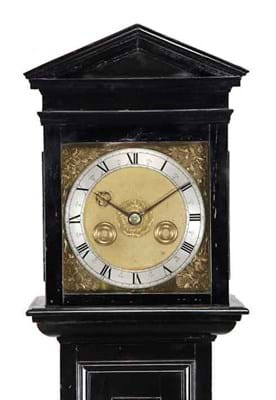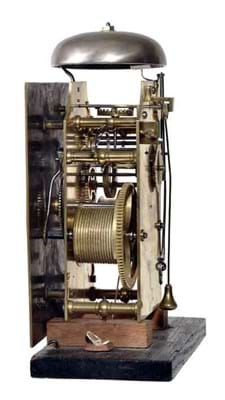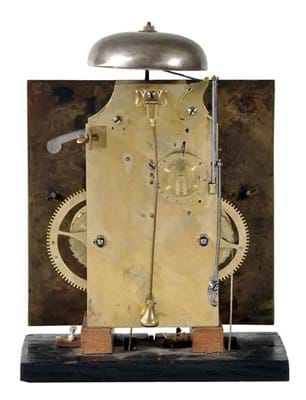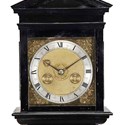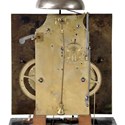The rare survivor is one of only four documented longcase clocks from Knibb's time in Oxford (c.1662-70) - all of them significantly different as the maker experimented with a relatively new technology. The movement to this clock - with bottle-shaped plates and six knopped, finned and latched pillars - is similar to those made in the London workshops of Ahasuerus Fromanteel, while the engraved dial decoration is known from clocks by Edward East.
This apparently conservative approach has led some horologists to consider this to be the earliest surviving clock by Knibb, made c.1665-7 within just a decade or so of the first pendulum clocks. At the time he was struggling to trade in Oxford due to restrictions placed by the City authorities which were only relaxed on payment of a fine in 1668.
Market Freshness
The clock, its 6ft 3in (1.90m) architectural case fashioned with ebonised fruitwood veneers and mouldings onto a pine carcass, was making its first appearance on the market for a century. It was purchased in Evesham, Worcestershire, in 1894 by the great grandfather of the owner and from the 1930s resided at Tower Hill Manor in Gomshall, Surrey.
The vendor inherited it from his grandmother's estate in 1972.
During that time it has been pictured in a number of key reference works including The Knibb Family, Clockmakers and The First Twelve Years of the English Pendulum Clock (both by Ronald A. Lee) and Early English Clocks by Dawson, Drover and Parkes.
There was a flurry of bidding up to £130,000 (the estimate set at £80,000-120,000 for the sale on March 11) before two bidders fought it out in the room. The buyer was a private collector.
While clocks by the Knibb family have made more - in July last year Bonhams sold a table clock from the third quarter of the 17th century by Samuel Knibb (Joseph's cousin and mentor) for £380,000 - the hammer price matches the record for any clock sold by a UK provincial auctioneer. In August 2008, Isle of Wight firm Island Auction Rooms took the same £240,000 sum for a longcase combining a year-going striking movement by Daniel Quare with a première-partie brass, pewter and tortoiseshell case.
The buyer's premium at Dreweatts & Bloomsbury Auctions was 24/12%.


